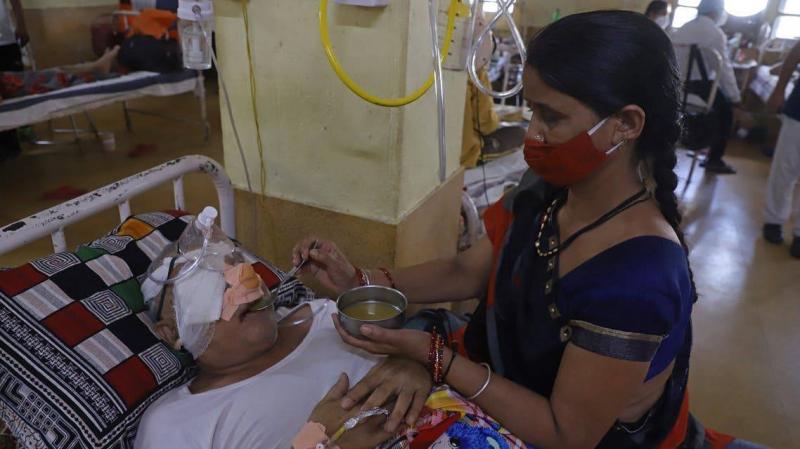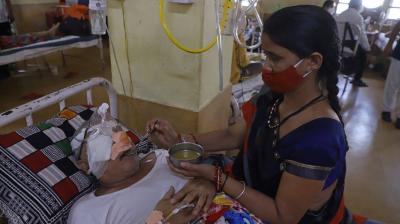Thousands of COVID-19 patients in India have contracted the deadly "black fungus," exacerbating the health burdens in a country facing a new wave of the pandemic. What is this fungus?
"Black fungus" disease is caused by mold found in soil and decaying organic matter like rotting leaves, according to the U.S. Centers for Disease Control and Prevention (CDC). People contract the fungal disease, of which several types exist, by inhaling fungal spores that can spread in hospitals and homes through humidifiers or oxygen tanks containing dirty water.
How serious is it?
Early detection of the infection is crucial because it is aggressive, requiring the scraping and removal of dead tissue. Surgeons may sometimes have to remove patients' noses, eyes, or even jaws to prevent the fungus from reaching the brain. The average mortality rate from the infection is 54%, according to the CDC. Once infected, a patient can die within days. However, the disease is not contagious. India typically deals with a few dozen cases of black fungus each year. Generally, the body's defenses fend off fungi, affecting only those with severely weakened immune systems, such as transplant patients or cancer patients.
Why are COVID-19 patients at risk?
Infected with the coronavirus and other illnesses, a severe phenomenon called a "cytokine storm" can occur, where the body's immune system overreacts to fight the virus by releasing a large amount of cytokines, leading to organ damage. Thus, doctors have been prescribing steroids to reduce the immune response. However, both conditions weaken the body's defenses and raise sugar levels, promoting the growth of fungi that feed on it.
What are the other risk factors?
Diabetic patients with high blood sugar levels are more susceptible to "black fungus." India has high diabetes rates. Some hospitals and doctors have excessively prescribed steroids, and some individuals have taken them at home without medical advice. In this context, Professor Srinath Reddy from the Indian Public Health Foundation told AFP, "People have started using them without control, excessively, and inappropriately."
What are the symptoms?
The Indian Ministry of Health confirmed that "black fungus" starts as a skin infection in the air sinuses located behind the forehead and nose, and in the cheekbones, between the eyes and teeth. It subsequently spreads to the eyes and lungs and can invade the brain. According to the Indian Ministry of Health, "black fungus" causes blackening or discoloration of the nose. Symptoms also include blurred or double vision, chest pain, breathing difficulties, and coughing up blood.
How many cases are there in India?
There are at least 7,250 cases of "black fungus" in India currently, according to the Hindustan Times, citing government documents. Maharashtra state has reported more than 2,000 cases, while Gujarat, the home state of Prime Minister Narendra Modi, has about 1,200 cases. At least nine Indian states have declared the infection an epidemic, with several cities allocating special hospital wings for these patients. Authorities have not disclosed the number of national deaths from "black fungus," but the Hindustan Times estimates at least 219, likely an underestimated figure.
What about the treatment medications?
There is a severe shortage of "Amphotericin B," the main drug used to treat "black fungus" infections. The government and pharmaceutical companies are trying to increase its production in India, once dubbed "the pharmacy of the world." Amoliya Nidhi, a health activist, mentioned that the Indian government previously failed to prepare and stock sufficient supplies of COVID-19 medications like "Remdesivir" and plasma. With black fungus, it repeated the same mistake. She added, "The government should have acted when the first cases of 'black fungus' were reported... People should not have to beg for essential medications that could save their loved ones."
Is black fungus a new disease or an old one?
Studies indicate that "black fungus" has existed since 1885. Dr. Hemant Thacker, a consultant and cardiologist at Parsi General Hospital in Mumbai, stated in an interview with CNN that "black fungus" damages the blood supply to the last organ in the body, resulting in tissue death, which then turns black; hence the name black fungus.




